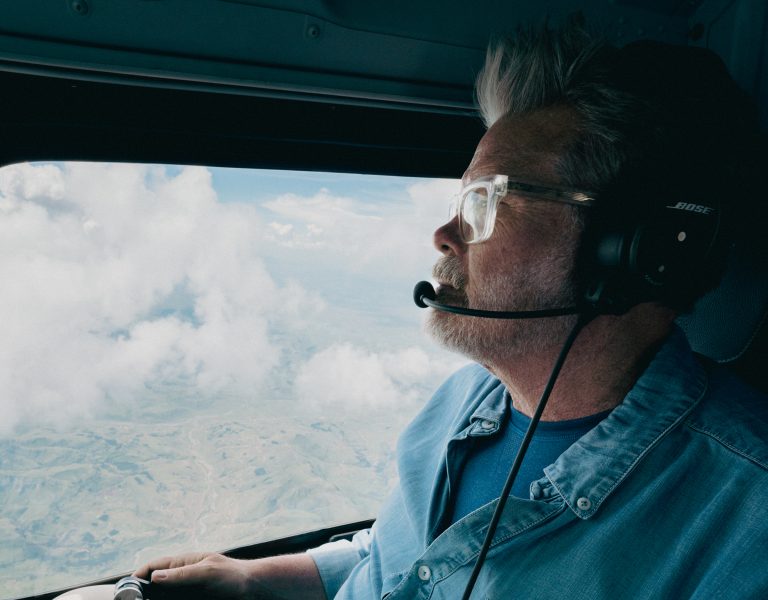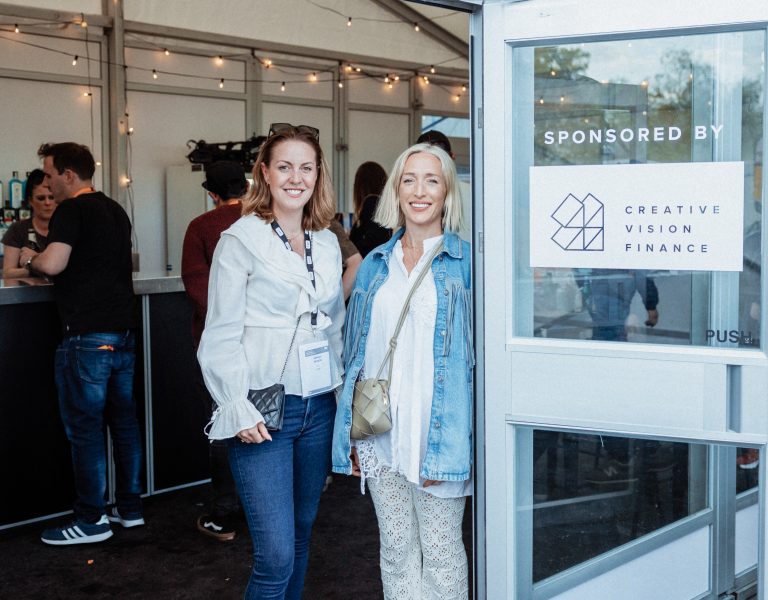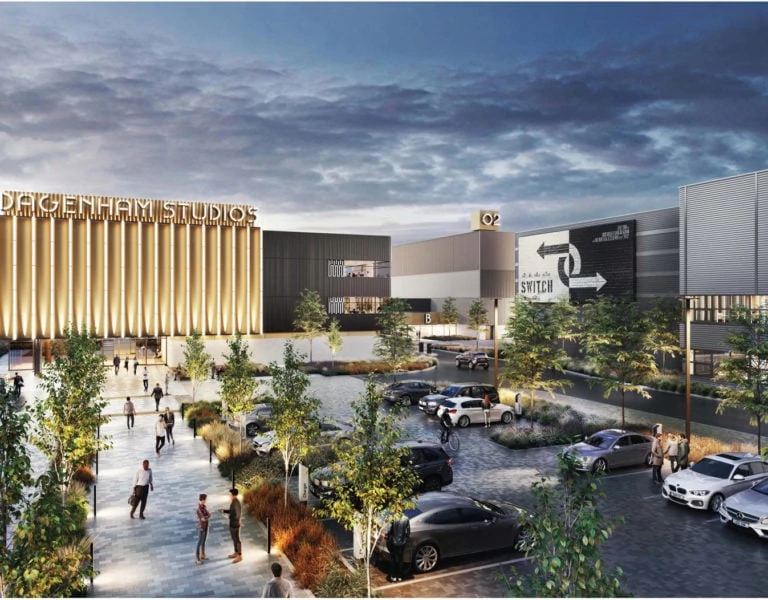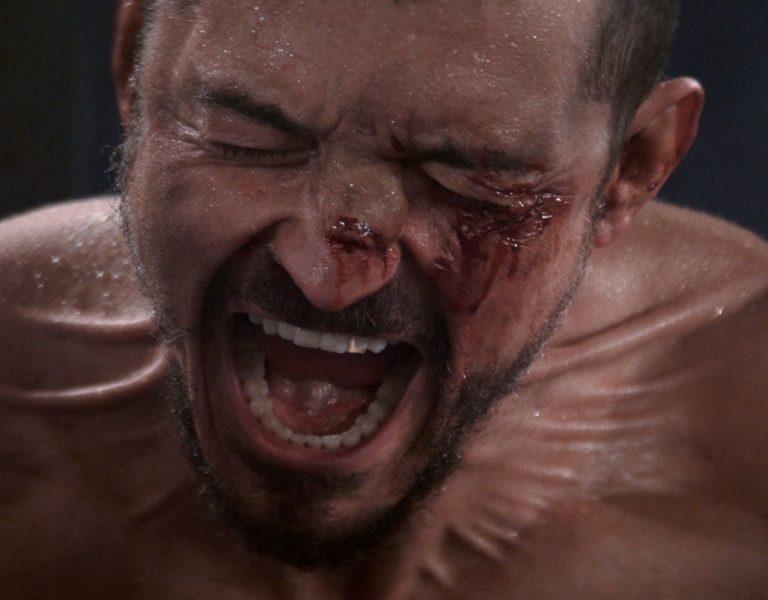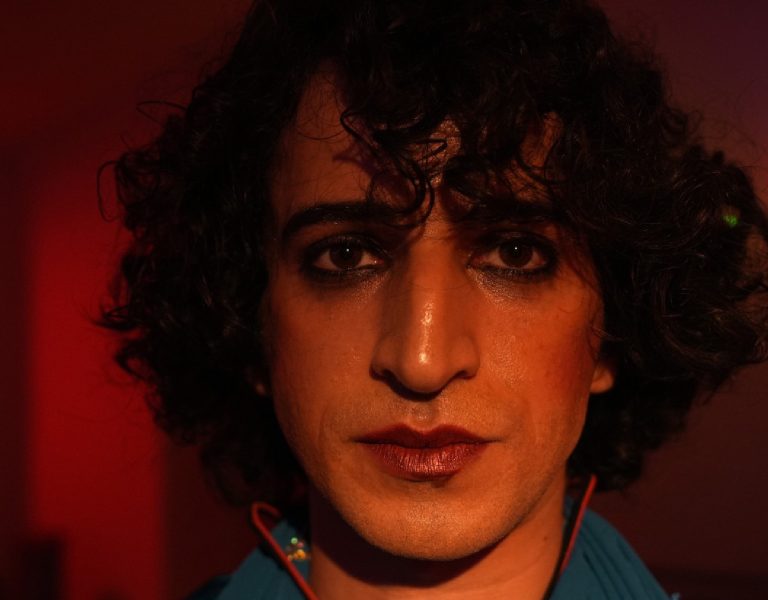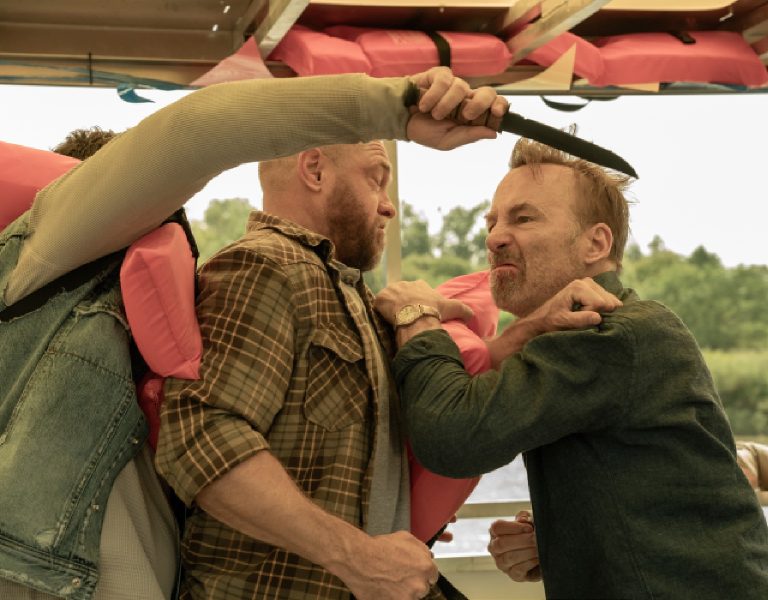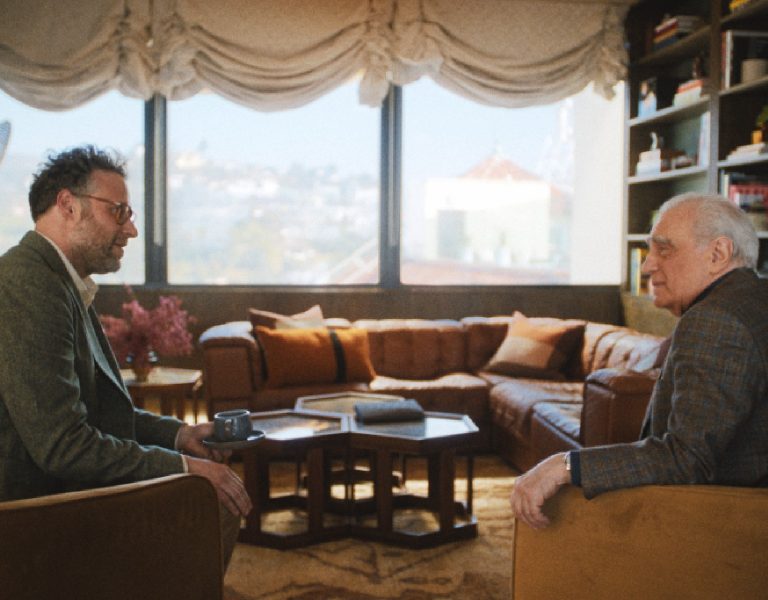Home » Features » Industry Wide Shot »
WATCH THE SKIES
Aerial cinematography is booming as filmmakers leverage advanced drone and helicopter technology to create dynamic, breathtaking visuals for major productions.
Aerial cinematography took a dive last year, along with the rest of the industry, but the skies are getting busier, as filmmakers shooting from drones and helicopters take advantage of the latest technology in cameras and lenses, stabilisation and tracking.
“We’ve had a very busy start of the year with productions for Netflix, Apple, and HBO,” says Jeremy Braben, the CEO of Helicopter Film Services Group. “We’re waiting for the next lot to start, while some features are starting up again.”
When we spoke to Phil Arntz of the Aerial Film Company, it was just after he’d shot Red Bull skydivers on the first-ever wingsuit flight through Tower Bridge. “There’s a wide variety of work coming through the door; it’s always interesting,” he says. “But with the strikes ending hopefully the big films will make a return.”
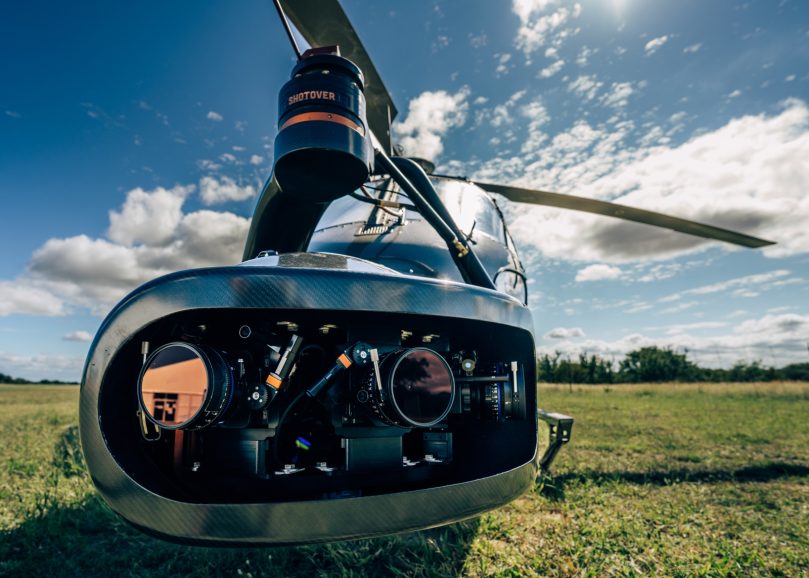
Buzzing around
It’s been a busy year so far for Flying Pictures too. Head of Operations Isabel Wells says that drones are increasingly popular. “They fulfil a lot more of the day-to-day aerial footage. It’s predominantly the heavy lift [Freefly] Alta X which is going out.”
“The team love flying the DJI Inspire 3, it can really play in the game,” Wells adds. This all-in-one 8K camera drone is popular with many of the companies we spoke to.
Marzano Films recently invested in drones like the Inspire 3 as part of a company expansion into a “one-stop shop for all things aerial”.
“They are integrated with GPS receivers so we can get position hold and height hold with phenomenal accuracy,” says Director John Marzano. “We have an RTK unit which provides a link between a ground-based GPS receiver and the aircraft GPS receiver, to provide inch-accurate positioning. With that technology and the Inspire 3 you can dolly track the aircraft and do a pan and tilt with the camera, record that [combined] move and then repeat it with incredible accuracy.”
The use of first-person view (FPV) drones is becoming almost standard. “When they’re used well, it’s an amazing thing,” says Braben. “We’ve been flying up and down buildings in Canary Wharf. The chase is more dynamic with an FPV than with something that flies flat.”
“We’ve got some fantastic FPV pilots with us, doing a lot with pyrotechnics at the moment,” says Wells. “We’re seeing really powerful action shots, including flying through explosives. That takes a lot of skill, a lot of confidence, a lot of safety briefings and a lot of trust in your team and the crew around you. It’s a full team effort.”
Also popular is the hybrid FPV, which adds a compact gimbal to the FPV, flown by a two-man team. “We get the ability to fly through trees and down narrow streets, or on fast chases with cars, or horses and carriages,” says Marzano, who described how it was developed on Meg 2: The Trench. “We’ve developed and finessed it since its initial bolt-together in the field, and have been using it for The Lord of the Rings: The Rings of Power and all sorts of other things.”
All the companies we spoke with had strong relationships with the Civil Aviation Authority (CAA), which is currently tightening up drone regulations.
“We’ve got one of the strongest drone permissions in the UK,” says Wells. “The standard drone operator license is set at 50m, but we’ve got an OSC [special operations license], for 10m for the Inspire 3. Our OSC on our heavy lift Alta X is 20m, one of the best you can get.”
Regarding regulations, Arntz says Brexit is still causing a major hurdle for CAA-licensed pilots and firms. “The UK is now seen as a third country operator by EASA, the European airspace regulator, and the paperwork is just insane,” he adds.
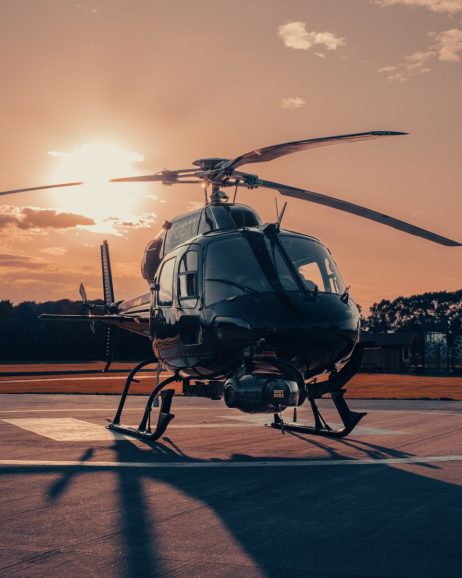
Knights of the air
Helicopters are still invaluable for certain shots, not just VFX plates. LA-based aerial DP Dylan Goss appreciates the unique capabilities of helicopters. “It’s a jet engine, it has inertia, and that has a cinematic feel to it,” he says. “When filming the Golden Gate Bridge, you want to use majestic arcs.”
Goss has also recently worked on features like Dune 2 and The Fall Guy, “trying to do things with the helicopter that might not be super obvious”.
“Just because you have a helicopter it doesn’t need to move,” he adds. “Denis [Villeneuve] and I have a shorthand for what we would call ‘tripod shots’ – where we just sit there and take it in, maybe sometimes there’s just a nuance of a movement but the impact of not moving is a thing.”
“A lot of the things we’re doing at the moment involve a combination of helicopter and drone,” says Braben. “Without giving too much away, much of the work involves dragons. We recently did a lot of helicopter background plates for VFX of big scenic expanses in the Arctic, mountains, and deserts, high, wide, fast, and long distances. Then for the landing sequences, where some creature will land, the closer proximity stuff, that’s done by the drone. And they’re working very well together.”
Helicopters do proximity too, of course: Phil Arntz and director/camera pilot Will Banks closely followed Tom Cruise as he rode a motorbike over a cliff in Mission Impossible: Dead Reckoning Part One. “What Will and I have gotten known for is hard and fast action flying, really down in the weeds, getting close to things whether that’s to cars, to terrain, or other aircraft in flight,” says Arntz.
Speaking of which, Aerial Film Company will soon be offering a fixed-wing plane to UK and European filmmakers.
“The PV-9 is a two-seat ex-military aircraft, with the rear seat decked out with the monitor and controller to operate the camera,” says Arntz, who says the company’s Shotover F1 is being converted into an F1 Rush as the camera system needs to be able to withstand up to 350 knots. The aircraft has oxygen masks, for very high-altitude work.
“It can fly with vintage like Spitfires, Messerschmitts, and Mustangs. It’s also well inside the speed envelope of airliners like Airbus and Boeing. The service ceiling of the plane means you can fly a lot higher than with a helicopter,” adds Arntz.
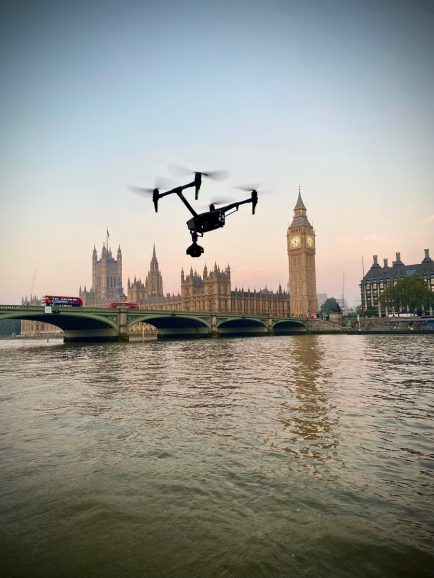
Steady as she goes
Ironically, there’s been little movement in the gyro-stabilised field of gimbals.
“It’s remained reasonably constant for the last five or six years,” says Braben.“We still do a lot of work using celluloid; we have a modified gimbal that will take a 35mm camera and IMAX. We’ve been doing quite a bit of IMAX, both for digital Alexa LF-acquired material and 65mm film.”
Marzano flies the Eclipse system, as well as the Mini Eclipse. “It’s a small package with a big punch,” he says of the latter. “I’ve just done an installation of an Angénieux Optimo 24-290 on the front of a RED Weapon camera. That gives me tremendous zoom capability from the helicopter; there is no other helicopter system that can take payload at that size and volume.”
Dylan Goss works a lot with Californian rental firm Team5, where a fair bit of modification goes on. “They have the largest number of Shotover gimbals in any one place,” he says, “They’re able to do quite a bit of integration and upgrading of existing systems.”
One such custom job was for a Paul Thomas Anderson movie that was to be entirely shot on VistaVision. However, the production company told Goss that the Shotover K1 gimbal had to carry not only a Panavision 11-1 zoom with a doubler, but a 1000ft (300m) film magazine. Through a lot of R&D, involving a 3D scanner, a 3D printer, a machining expert, and a legacy of experience with gimbals, Goss and Team5 were able to modify the Shotover and create a customised brace for the magazine, to get very successful shots.
“We’re also exploring some ways to capture larger views than current gimbals are physically capable of, by using multiple gimbals and syncing them together,” Goss says, but feels gimbal technology needs a prestigious DP with a big R&D budget to “propel our business forward”.
“We’re also exploring some ways to do larger views than current gimbals are physically capable of, using multiple gimbals and syncing them together,” Goss says, but feels gimbal technology needs a prestigious DP with a big R&D budget to “propel the business forward”.
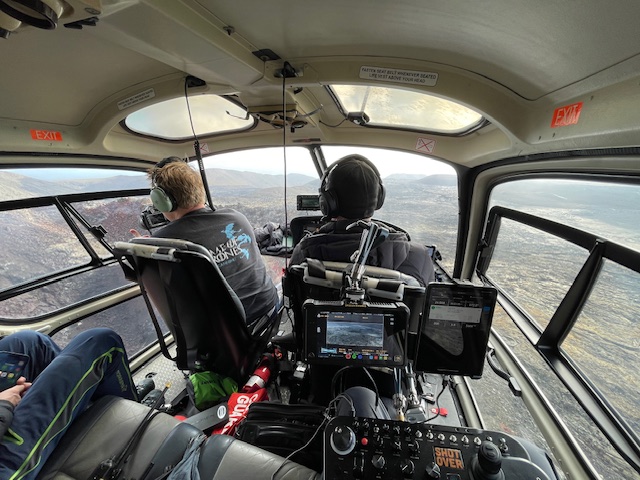
Array of light
Goss is also an expert in arrays, gimbals carrying identical synced cameras and matched lenses. The latest arrays, offering wide fields of view and more affordable costs thanks to integrated builds, will match formats to what the main unit is using; Goss used the Sony Venice Rialto extension in an array on Black Panther: Wakanda Forever.
“The aerial array that I feel is most flexible and in heavy use now is the Trident from Team5 US and Aering in the EU,” says Goss. “Often the geometry that we set up now is with the bodies in a portrait orientation, because the resulting ‘stitch’ of the three frames is more of a 1.5:1 ratio in total. We’ve also innovated with monitoring, with multi-viewers that can handle rotating and combining.”
ACS can offer UK productions the integrated Shotover Hammerhead array. “It’s something we used quite extensively on Masters of the Air,” says Arntz. “Most of the time the costs balloon because you’re trying to get three camera bodies, and a matched set of lenses, whereas now we have three cameras and three lenses that always live together in an easily deployable array. Productions love it.”
“We have a variety of different arrays for the helicopters,” says Marzano. “We also built a three-camera toed-in array to hang on a drone to shoot some VFX plates on Wonka. We recently shot with it again in the jungle for Paddington in Peru.”
Shots using arrays have also supplied volumes and LED walls for virtual production, with HFS just one of the firms gathering material for immersive experiences; Braben recently acquired material for The Sphere in Las Vegas with the fish-eyed Big Sky array.
“We’re also doing quite a bit for headset content, impressive landscapes that you can immerse yourself in,” he adds. “At the moment, it’s mostly by helicopter, but we’ve done some immersive 360° material using the Nokia Ozo on a drone.”
Goss is also supplying virtual production. “I have a well-used orientation with Venice 2s and some 15mm lenses for LED wall projection and partial volume work,” he says. “I’ve done a full wrap volume – the entire film takes place in a Cessna plane in flight– where we shot with six RED Raptors in a compact array that we hung beneath the helicopter from a long line. The entire film is set in the air, so once we had that volume footage, they were good to go.”
Camera tech is constantly boosting the aerial toolset; for example, Braben welcomes the new RED V-Raptor XL with its internal ND filters. “There are also some exciting new lenses which are faster and have a greater zoom range, going from wide to tight,” he says. “From an aerial point of view, that was always the holy grail.”
DPs like Roger Deakins and Greig Fraser are famous for working with vintage and more unusual lenses. Goss describes using a 150-600 Canon on Dune 2, with a spotting sight to help him find what he needed to shoot in the expanse of the desert. His aerial cinematics on Dune 2 also had to match in-camera looks devised by Fraser, requiring Goss to make extensive use of stacked ND filters, for example. While shooting in Vienna for Black Panther: Wakanda Forever, DP Autumn Durald Arkapaw asked him to use an old Panavision prime lens rather than the typical Premista, much to the consternation of the VFX team. “I am here to serve the whole film, but my heart is ultimately with the camera department,” he says. “It’s wonderful to get that character in-camera. When people ask me what you are proud of, it’s those films that have that spirit to them.”







